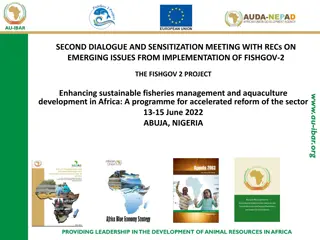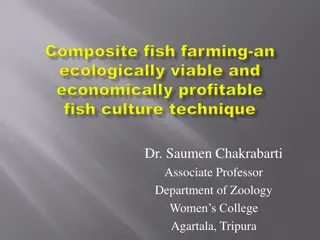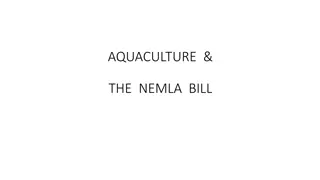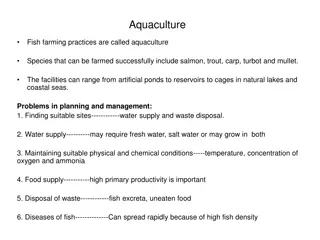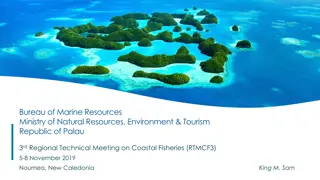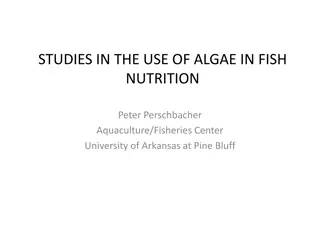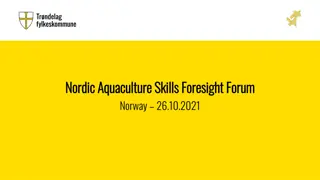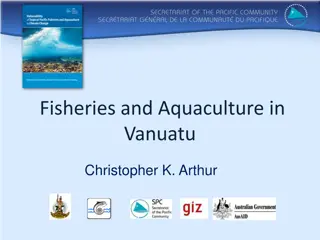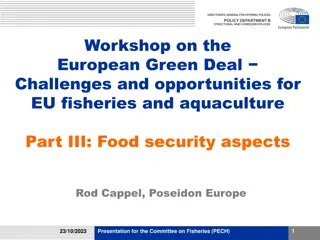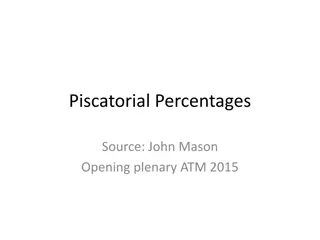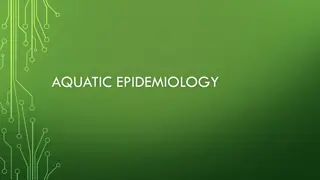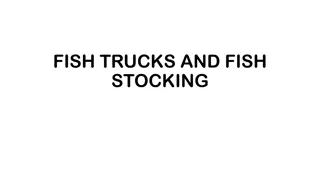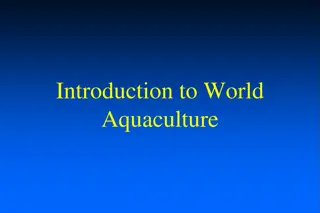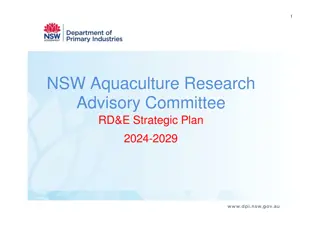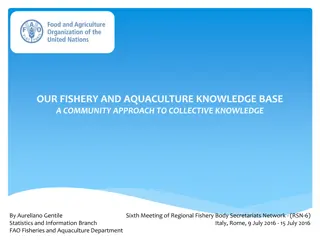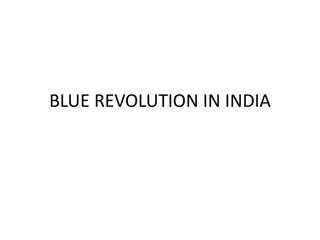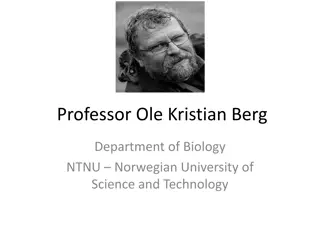Advantages of Recirculating Aquaculture Systems for Sustainable Fish Production
Recirculating aquaculture technology offers numerous benefits such as water reuse, minimized water consumption, enhanced biosecurity, and cost-effectiveness. By adopting recirculating systems, aquaculture farms can comply with stricter regulations, address water scarcity issues, and optimize production efficiency. Different water reuse systems are available, each offering unique advantages in terms of ammonia reduction and water exchange rates. Additionally, the technology allows for efficient carbon dioxide and solid waste removal, contributing to a more sustainable approach to fish farming.
Download Presentation

Please find below an Image/Link to download the presentation.
The content on the website is provided AS IS for your information and personal use only. It may not be sold, licensed, or shared on other websites without obtaining consent from the author.If you encounter any issues during the download, it is possible that the publisher has removed the file from their server.
You are allowed to download the files provided on this website for personal or commercial use, subject to the condition that they are used lawfully. All files are the property of their respective owners.
The content on the website is provided AS IS for your information and personal use only. It may not be sold, licensed, or shared on other websites without obtaining consent from the author.
E N D
Presentation Transcript
Benefits of Recirculating Aquaculture Technology
My background (I m an academic but ) Fingerlakes Aquaculture 1.0 million lbs per year of tilapia production located in upstate NY
New Species - Tilapia 150,000 Whole Frozen Frozen Fiilets Fresh Fillets Total 120,000 90,000 tonnes 60,000 30,000 0 1996 1998 2000 2002 2004 2006 360 000 tonnes (liveweight equivalent) in 2006, 1.2 kg/person Five years ago this species was almost unknown in the US market!
Why Reuse Water ? Stricter effluent regulations Competition for water resources Disease and biosecurity issues Cost effectiveness: optimized feeding & temperatures; stocking density Minimize water use Conserve heat, reduce discharge and water source needs Maximize bio-security Flexibility in where farm is located (near market-Urban applications)
Water Reuse Systems Three basic types: serial reuse Does not require a biofilter Flow is reused until NH3 becomes limiting partial reuse full recirculating (0 to 15% water exchange per day)
Water and Land Use Issues: Ratio of Land and Water Use for Various Systems versus Indoor Recirculating Tilapia Production Species and System Production Intensity (kg/ha/y) Water required Ratio = Land or Water Use to RAS Use Land (Liter/kg) Water O. niloticus (Nile tilapia) ponds I. punctatus (Channel catfish) ponds 17,400 21,000 77 210 3,000 3,000 - 5,000 448 400 S. gairdneri (Rainbow trout) raceways 150,000 210,000 9 2,100 Panaeid shrimp pond (Taiwan) 4,200 - 11,000 11,000 - 21,340 177 160 O. niloticus (Nile tilapia) RAS 1 1 1,340,000 100
Carbon Dioxide Removal Fine & Dissolved Solids Removal Fish Culture Tank Air Stone Diffuser Packed Column Foam Fractionation Round, Octagonal Rectangular or D-ended Design of a Water Recirculation System Disinfection Aeration or Oxygenation Ultraviolet Light Ozone Contact Air Stone Diffuser Packed Column Down-flow Contactor Low Head Oxygenator U-tube Biological Filtration (Nitrification) Fluidized Bed Filters Mixed Bed Filters Trickling Filters Rotating Bio-Contactors Waste Solids Removal Sedimentation Swirl Separators Screen Filters Bead Filters Double Drain
All design parameters are proportional to feeding rate 0.25 - 1 kg 0.25 - 1.0 kg Oxygen CO2 0.25 - 0.5 kg Waste Solids 1 kg Feed 0.18 - 0.4 kg Alkalinity 0.02 - 0.04 kg NH3 & NH4
Partial Reuse System - Mixed-cell Raceway Return to System To Wetland or Further Treatment Side-wall Discharge LHO Oxygen Addition Degassing CO2 Micrscreen Filter 35-45 kg trout/Lpm Solids Control Assuming: Culture Density : 80 kg fish/m3 2 tank exchanges per hour 37 Lps from Center Drains (5 drains 6 Lps/drain) 147 Lps from Side Drains (5 side drains 29 Lps/drain) Microscreen Filter for Solids Control (147 Lps)
Recirculating Tank System Lab Growout 4 Growout 3 Growout 1 Growout 2 Q1 Office Q2 North Carolina State Fish Barn Layout
Design Examples Sturgeon 2.0' 26ft Tanks 9.0' 25.0' 25.0' MBBR Microscreen Filter
Design Examples Marine Shrimp Mixed-cell Raceways 10 x 8 ft Garage Door Speece Cones Solids Sump Bead Filter Reservoir Crew Room Foam Fractionator 5.0' Lab/TSS/VSS Lab/pH/Hach/Alkalinity Raceway Production Tank Juvenile Tank 8.0' Lab/Office 16.0' Lab Refrig 7' 0.0" 15.0' 9.0' 8.0' 6.0' 10.0' Staff Refrig 14' 9.0" 10' 0.0" 3' 6.0" 4.0' 15.0' 10.0' 4.0' Shelves Heavy Duty 3'-0" x 4'-0'' Storage/Work Room Raceway Production Tank Foam Fractionators Storage Feed Speece Cones Speece Cones Juvenile Tank Shelves Heavy Duty 3'-0" x 4'-0'' Speece Cones 10 x 8 ft Garage Door LOX Microbulk Tanks Microbial Floc Based Systems Ammonia Removed by Adjusting Carbon/Nitrogen Ratio
Design Examples Boutique Tilapia 24" x 24" x 48" Sump UV 33" x 58" PBF-5S 24" x 24" x 48" Sump 60" x 113" PBF-25 Mixed-cell raceways 50' 0.0" 24" x 24" x 48" Fingerling Tanks Sump Purging Tanks Nursery/ Fry Systems Crew Room Lab/Office




